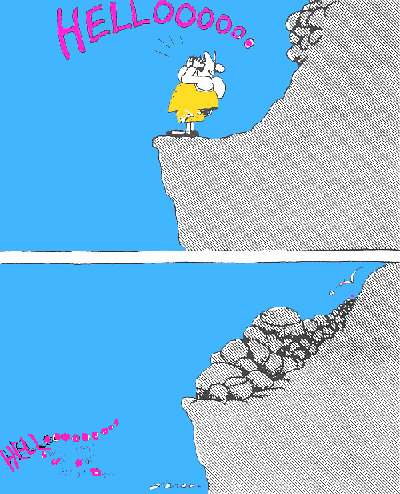|

1 - A typical alpine sedimentation process (© Gary
Larson)
|
Rocks either
form the basement underneath the vegetation or are exposed as mountains.
Rocks look static, but it's better not to call them, or they may come
too quickly (Fig. 1).
The tectonic activity on our earth shows that oceanic
and continental plates are in constant motion, colliding and separating,
forming mountains or trenches, respectively. At the same time, other
mountains are being destroyed by wheathering and erosion. The highest
mountains are generally the youngest.
If you hike in alpine regions you may encounter very
different types of reliefs, depending on the age, but also on the
type and formation of the rock. There are three main rock types: the
sedimentary rocks, the igneous rocks and the metamorphic rocks. Their
evolution is shown in the rock cylce. But rock types do not only influence
the relief, but also the type of vegetation
and soils, slope stability, etc.
| |
|
Heinz
Veit, Bettina Jenny, Andreas Schellenberger, Jan-Hendrik May |
| |
|
Res
Brodbeck, Kalli Benetos |
|

